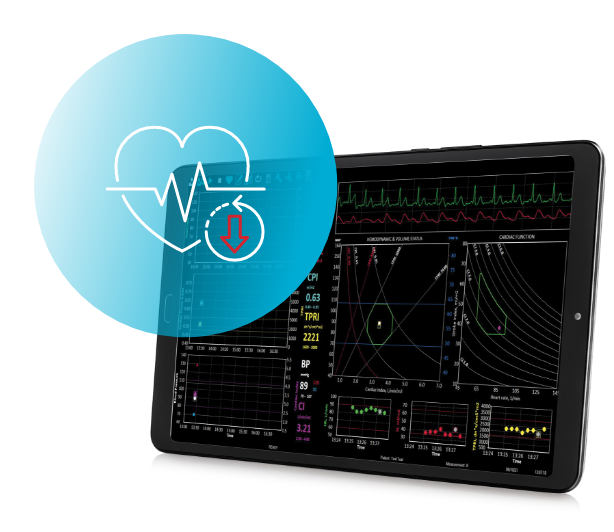Admission & Hospitalization Reduction
NICaS can help in reducing readmission & hospitalization rates for heart failure patients. Our technology can assist in the assessment and management of CHF patients in various settings.
Reducing Readmission & Hospitalization Rates for Heart Failure Patients
How NICaS Helps Reduce Hospitalization and Readmission Rates:
Utilizing NICaS technology, provided by NI-Medical, can effectively reduce hospitalization and readmission rates for heart failure, including reversions from outpatient settings back to the hospital.
NICaS is accurate, and more importantly, it is consistent. This allows assessment of a patient’s clinical response to medication adjustments over time. NICaS enables medication titration not previously seen in these CHF patients.
NICaS takes the guesswork out of managing difficult patients with heart failure. It facilitates expeditious optimization of these patients.
NICaS helps to identify patients with impending heart failure before they reach the stage of decompensation, allowing the time to make the necessary adjustments that prevent deterioration.
Using NICaS for the management of HF patients reduces Hospital Readmission Rate by over 90%.
Heart Failure Hospitalizations In Numbers
CHF is the chief diagnosis in 875,000 hospitalizations annually, and the most common diagnosis in hospital patients aged 65 years and older.
Heart failure is responsible for 11 million physician visits each year, and leads to more hospitalizations than all forms of cancer combined.
The majority of hospital admissions for heart failure are, in fact, readmissions.
Approximately 24% of the people discharged from the hospital with heart failure will be readmitted within 30 days. More than half of them will be readmitted within 6 months.
Heart failure is the number one discharge diagnosis seen by Medicare. The direct and indirect costs of heart failure add up to about $40 billion annually.

Related Clinical Markets
Related Clinical Studies
The Impact of Positive Inotropic Therapy on Hemodynamics and Organ Function in Acute Heart Failure: A Differentiated View
Authors: Juan Cheko, Nikolaos Patsalis, Julian Kreutz, Dimitar Divchev, Georgios Chatzis, Bernhard Schieffer, Birgit Markus Conclusion: Patients with acute decompensated HF benefit from positive inotropic
Comparing elective and emergency caesarean section by using bioimpedance method
Authors: Zuhal Çavuş, Ayşe Vahapoğlu, Ülkü Aygen Türkmen, Fatma Ketenci Gencer, Elif Yıldız Conclusion: Understanding normal hemodynamic values before, during, and after C/S is feasible
Noninvasive Hemodynamic Evaluation Following TAVI for Severe Aortic Stenosis
Authors: Tzlil Grinberg, Yaron Aviv, Mordehay Vaturi, Leor Perl, Maya Wiessman, Hanna Vaknin-Assa, Pablo Codner, Yaron Shapira, Ran Kornowski, Katia Orvin Conclusion: Unique short‐term adaptive
Correlation of Impedance Cardiography-Derived and Cardiac Magnetic Resonance-Derived Stroke Volumes
Authors: Pedram Hassan-Tash, Umar Ismail, Iain D C Kirkpatrick, Amir Ravandi, Davinder S Jassal, Brett Hiebert, Malek Kass, Richard A Krasuski, Ashish H Shah Conclusion:
Non-invasive hemodynamic evaluation following TAVI for severe aortic stenosis
Authors: K Orvin, T Grinberg, R Kornowski, Maya Wiessman, Yaron Aviv, Leor Perl CONCLUSION: A unique pattern of short and longer-term adaptive hemodynamic changes was
Lack of Concordance Between Parameters Defining Cardiogenic Shock in Patients With ST Elevation Myocardial Infarction
Authors: Triston Eastman, Mirna Ragheb, Mullein Thorleifson, Brett Hiebert, Kunal Minhas, Malek Kass, Amir Ravandi and Ashish Shah Conclusion: Our study is the first to
